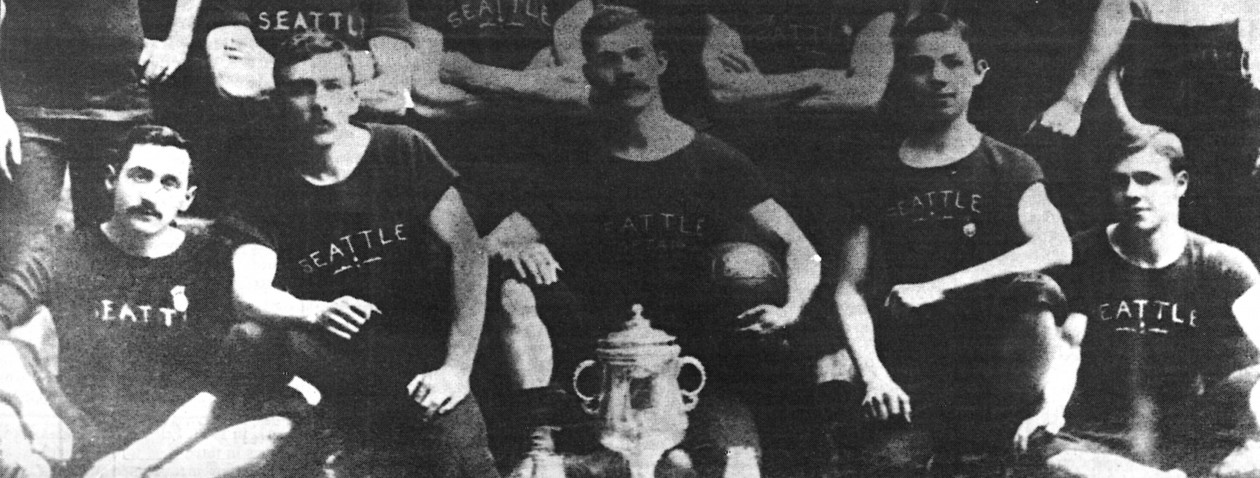This is the story behind one such score line which, given contemporary conditions, seems inexplicable. Ah, but context is everything.
For the region, it’s about two intra-city rivals vying for a chance to make history. For Washington state’s most established men’s collegiate program, it’s a story of how a proud program can reach it’s then-zenith and nadir, all in the span of some 20 hours.
 It’s the tale of a shotgun playoff, bending the rules between friends, a critical yet costly play and the extenuating circumstances surrounding not only the University of Washington’s first excursion outside the Northwest, but also their initial invitation to the NCAA tournament.
It’s the tale of a shotgun playoff, bending the rules between friends, a critical yet costly play and the extenuating circumstances surrounding not only the University of Washington’s first excursion outside the Northwest, but also their initial invitation to the NCAA tournament.
Innocence Lost
To comprehend what unfolded back in November of 1968, one must first get a grasp of the landscape. That year, America lost much of what remained of its innocence, yet collegiate soccer, at least in and around Puget Sound, was very much cloistered. Public opinion was turning against involvement in Vietnam and two charismatic, idealistic leaders, Martin Luther King, Jr., and Robert F. Kennedy, were both slain by assassins.
Whereas now U.S. soccer is very much connected to the greater world, college soccer in 1968 was embryonic, and in Washington it was only beginning to come online.
In the Pacific Northwest, the sport was just beginning to move from a game primarily played by adult immigrants to an activity for American youth. A state junior soccer association had only been formed two years earlier. Washington, the state’s lone varsity program beginning in 1962, was finally being joined by others: Seattle University in 1967 and Seattle Pacific the following year.
 U-Dub soccer resources were minimal. Scholarships were non-existent, coaches earned modest stipends and travel was limited to a 3-hour radius from Seattle. Schedules were rarely more than a dozen games, and the scarcity of Northwest opposition meant double- and sometimes triple-round robins, plus playing high schools, student-run college clubs and Canadian teams with much less stringent eligibility standards.
U-Dub soccer resources were minimal. Scholarships were non-existent, coaches earned modest stipends and travel was limited to a 3-hour radius from Seattle. Schedules were rarely more than a dozen games, and the scarcity of Northwest opposition meant double- and sometimes triple-round robins, plus playing high schools, student-run college clubs and Canadian teams with much less stringent eligibility standards.
These were uncomplicated times, not only around Puget Sound but nationally. Intersectional play was practically unheard-of, and the fledgling NCAA tournament was open to schools of all classifications. It was that inclusive spirit which set in motion the unusual events of November 18 and 19, 1968.
Late Invitation
In mid-November, the fledgling, four-team Western Washington Soccer Conference was approaching the three-quarter pole in its season when commissioner Joe Kearney (also UW athletic director) answered a call from the NCAA. Surprisingly, the WWSC winner was being invited to participate in the NCAA tournament. Only one problem: the playoffs would begin before the conference schedule would be completed.
 Everyone was anxious to take advantage of the offer. However, it would be a tight squeeze. It was less than a week before the WWSC winner was to travel and play a first-round game in California on Nov. 19, and there was a three-way tie atop the standings.
Everyone was anxious to take advantage of the offer. However, it would be a tight squeeze. It was less than a week before the WWSC winner was to travel and play a first-round game in California on Nov. 19, and there was a three-way tie atop the standings.
Quickly Kearney decreed that the top two eligible teams, Washington and Seattle U (Western Washington was a club), meet to determine the WWSC representative. The date of the winner-take-all game: Nov. 18. That is to say, on one day’s notice, the Huskies and Chieftains would hastily face-off under the lights at Lower Woodland Park, with the winner to fly first thing the next morning to play at the University of San Francisco.
“We wanted to go to the playoffs so bad, to be able to put ourselves on the map,” recalls Joe Zavaglia, Seattle U’s key players. “We knew the U-Dub had a lot of talent because it was always a challenge playing them.”
Next: Washington and Seattle U go the distance to decide the conference and who gets the plane tickets to San Francisco.
